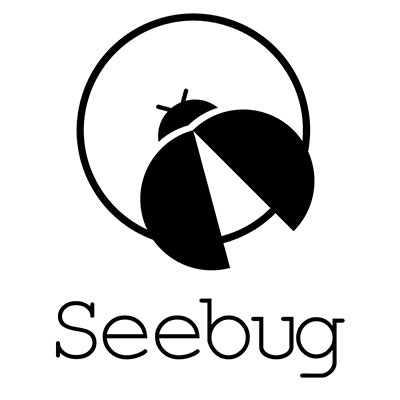# ICS Advisory (ICSA-18-282-01)
## GE iFix
Original release date: October 09, 2018
[Print Document](javascript:window.print\(\);)
[Tweet](https://twitter.com/share?url=https%3A%2F%2Fus-
cert.cisa.gov%2Fics%2Fadvisories%2FICSA-18-282-01)
[Like Me](https://www.facebook.com/sharer.php?u=https%3A%2F%2Fus-
cert.cisa.gov%2Fics%2Fadvisories%2FICSA-18-282-01)
[Share](http://www.addthis.com/bookmark.php?url=https%3A%2F%2Fus-
cert.cisa.gov%2Fics%2Fadvisories%2FICSA-18-282-01)
### Legal Notice
All information products included in [https://us-cert.gov/ics](/ics) are
provided "as is" for informational purposes only. The Department of Homeland
Security (DHS) does not provide any warranties of any kind regarding any
information contained within. DHS does not endorse any commercial product or
service, referenced in this product or otherwise. Further dissemination of
this product is governed by the Traffic Light Protocol (TLP) marking in the
header. For more information about TLP, see [https://www.us-
cert.gov/tlp/](/tlp/).
* * *
## 1\. EXECUTIVE SUMMARY
* **CVSS v3 5.3**
* **ATTENTION:** Exploitable remotely/low skill level to exploit
* **Vendor:** GE
* **Equipment:** Gigasoft component of iFix
* **Vulnerability:** Unsafe ActiveX Control Marked Safe For Scripting
## 2\. RISK EVALUATION
Successful exploitation of this vulnerability could cause a buffer overflow
condition.
## 3\. TECHNICAL DETAILS
### 3.1 AFFECTED PRODUCTS
GE reports this vulnerability in a Gigasoft component affects the following
iFix HMI products:
* iFIX 2.0 - 5.0
* iFIX 5.1,
* iFIX 5.5, and
* iFIX 5.8
Gigasoft components older than Version 8.0 are likely to be used in other
products from other vendors also.
### 3.2 VULNERABILITY OVERVIEW
#### 3.2.1 [UNSAFE ACTIVEX CONTROL MARKED SAFE FOR SCRIPTING
CWE-623](https://cwe.mitre.org/data/definitions/623.html)
Multiple instances of this vulnerability have been identified in the third-
party ActiveX object provided to GE iFIX by Gigasoft. Only the independent use
of the Gigasoft charting package outside the iFIX product may expose users to
the reported vulnerability. The reported method shown to impact Internet
Explorer is not exposed in the iFIX product, nor is the core functionality of
the iFIX product known to be impacted.
[CVE-2018-17925](http://web.nvd.nist.gov/view/vuln/detail?vulnId=CVE-2018-17925)
has been assigned to this vulnerability. A CVSS v3 base score of 5.3 has been
calculated; the CVSS vector string is
([AV:L/AC:L/PR:N/UI:R/S:U/C:L/I:L/A:L](https://www.first.org/cvss/calculator/3.0#CVSS:3.0/AV:L/AC:L/PR:N/UI:R/S:U/C:L/I:L/A:L)).
### 3.3 BACKGROUND
* **CRITICAL INFRASTRUCTURE SECTORS:** Multiple sectors
* **COUNTRIES/AREAS DEPLOYED:** Worldwide
* **COMPANY HEADQUARTERS LOCATION:** United States
### 3.4 RESEARCHER
LiMingzheng of 360 aegis security team reported this vulnerability to NCCIC.
## 4\. MITIGATIONS
GE released iFIX 5.9 in June 2017 to address this issue by incorporating
Gigasoft Version 8.0
GE recommends users only use ActiveX from trusted sources.
To obtain the latest versions of the iFIX product, please contact the local GE
Digital representative. Contact information is available at:
<https://digitalsupport.ge.com/communities/CC_Contact>
For more information on this vulnerability and associated software updates,
please see GE Security Communication GED SecComm 18-01 dated March 27, 2018 on
the GE website:
<https://digitalsupport.ge.com/communities/en_US/Article/KB0024470>
NCCIC recommends users take defensive measures to minimize the risk of
exploitation of this vulnerability. Specifically, users should:
* Minimize network exposure for all control system devices and/or systems, and ensure that they are [not accessible from the Internet](/ics/alerts/ICS-ALERT-10-301-01).
* Locate control system networks and remote devices behind firewalls, and isolate them from the business network.
* When remote access is required, use secure methods, such as Virtual Private Networks (VPNs), recognizing that VPNs may have vulnerabilities and should be updated to the most current version available. Also recognize that VPN is only as secure as the connected devices.
NCCIC reminds organizations to perform proper impact analysis and risk
assessment prior to deploying defensive measures.
NCCIC also provides a section for [control systems security recommended
practices](/ics/content/recommended-practices) on the ICS-CERT web page.
Several recommended practices are available for reading and download,
including [Improving Industrial Control Systems Cybersecurity with Defense-in-
Depth Strategies](/sites/default/files/recommended_practices/NCCIC_ICS-
CERT_Defense_in_Depth_2016_S508C.pdf).
Additional mitigation guidance and recommended practices are publicly
available on the [ICS-CERT website](/ics/) in the Technical Information Paper,
[ICS-TIP-12-146-01B--Targeted Cyber Intrusion Detection and Mitigation
Strategies](/ics/tips/ICS-TIP-12-146-01B).
Organizations observing any suspected malicious activity should follow their
established internal procedures and report their findings to NCCIC for
tracking and correlation against other incidents.
No known public exploits specifically target this vulnerability.


暂无评论